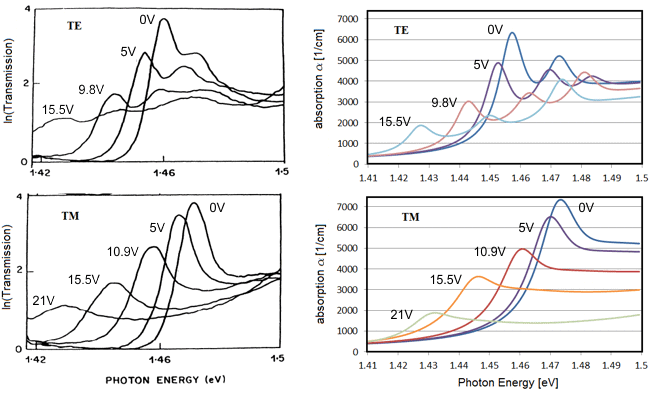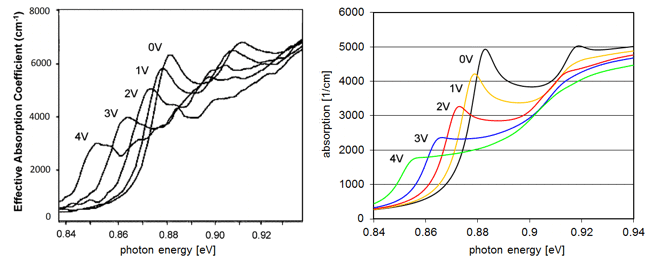HaroldA hetero-structure laser diode model |
    |
Electro-Absorption Modulators (QCSE)Simulation of AlGaAs and SiGe electro-absorption modulators with Harold EAM softwareWe used Harold QCSE to model a AlGaAs electro-absorption modulator and a SiGe electro-absorption modulator relying on the Quantum-Confined Stark Effect (QCSE). The results are shown below alongside published experimental data; as you can see the simulations are in good agreement with the experiments, with all main features reproduced. We expect that the differences in absolute absorption coefficients are due to scaling ambiguities in the experimental papers.
References[1] S.-L. Chuang, S. Schmitt-Rink, D. A. B. Miller and D. S. Chemla, “Exciton Green’s function approach to optical absorption in a quantum well with an applied electric field”, Phys. Rev. B, 43, 2, pp. 1500-1509 (1991) [2] Y.-H. Kuo, Y. K. Lee, Y. Ge, S. Ren, J. E. Roth, T. I. Kamins, D. A. B. Miller, and J. S. Harris, “Quantum-confined stark effect in Ge–SiGe quantum wells on Si for optical modulators”, IEEE J. Sel. Topics Quantum Electron., 12, pp. 1503–1513 (2006)
|





